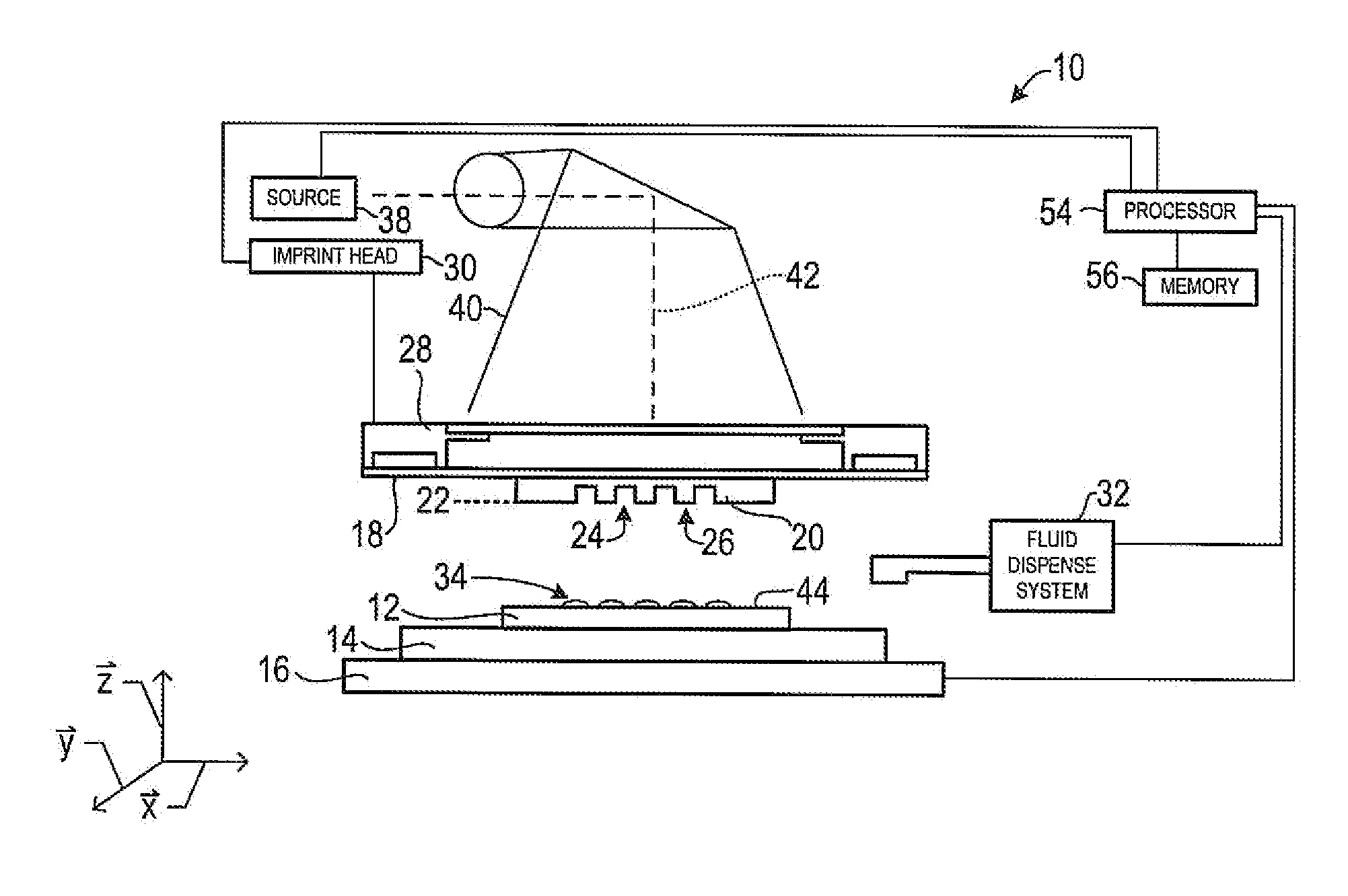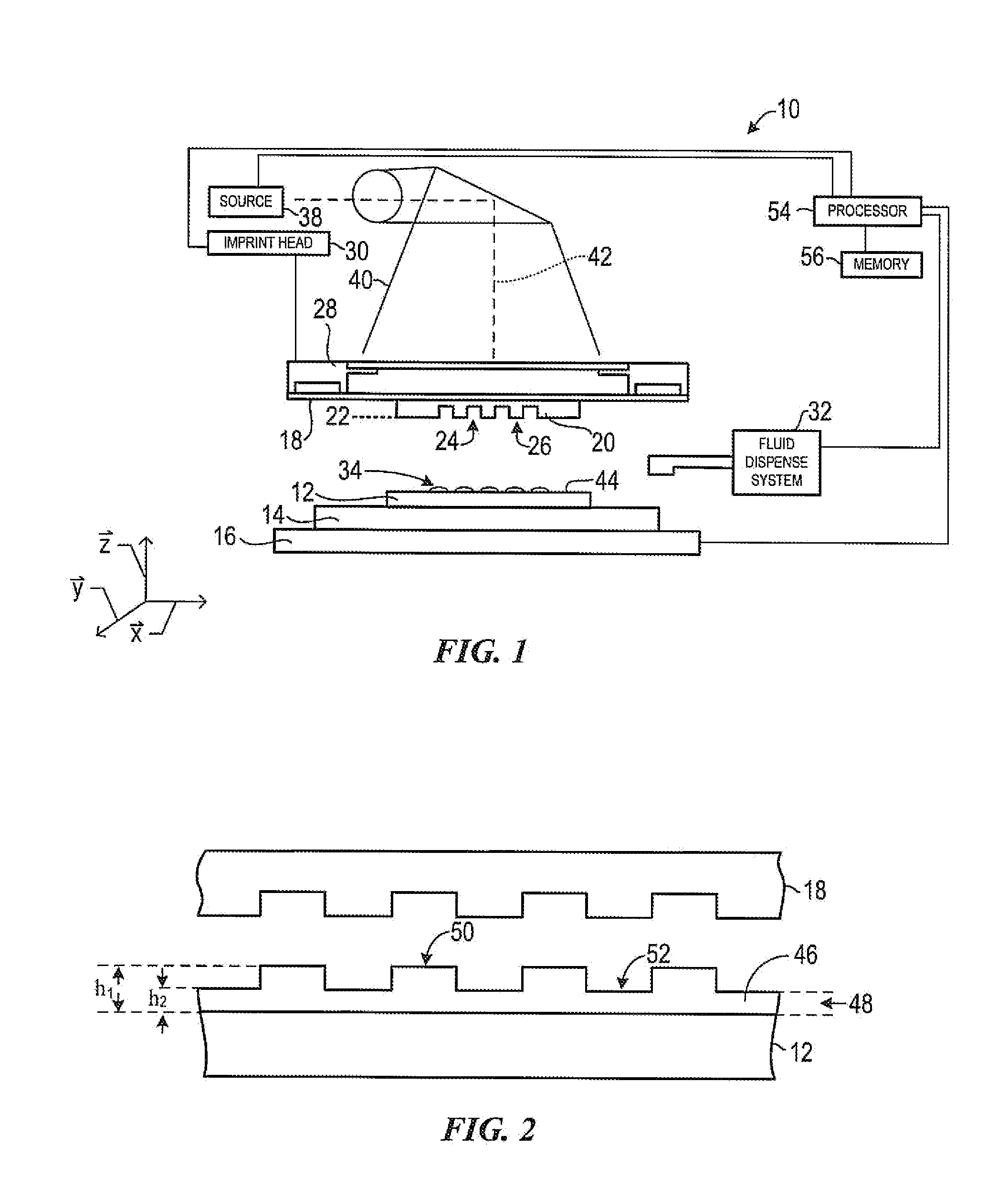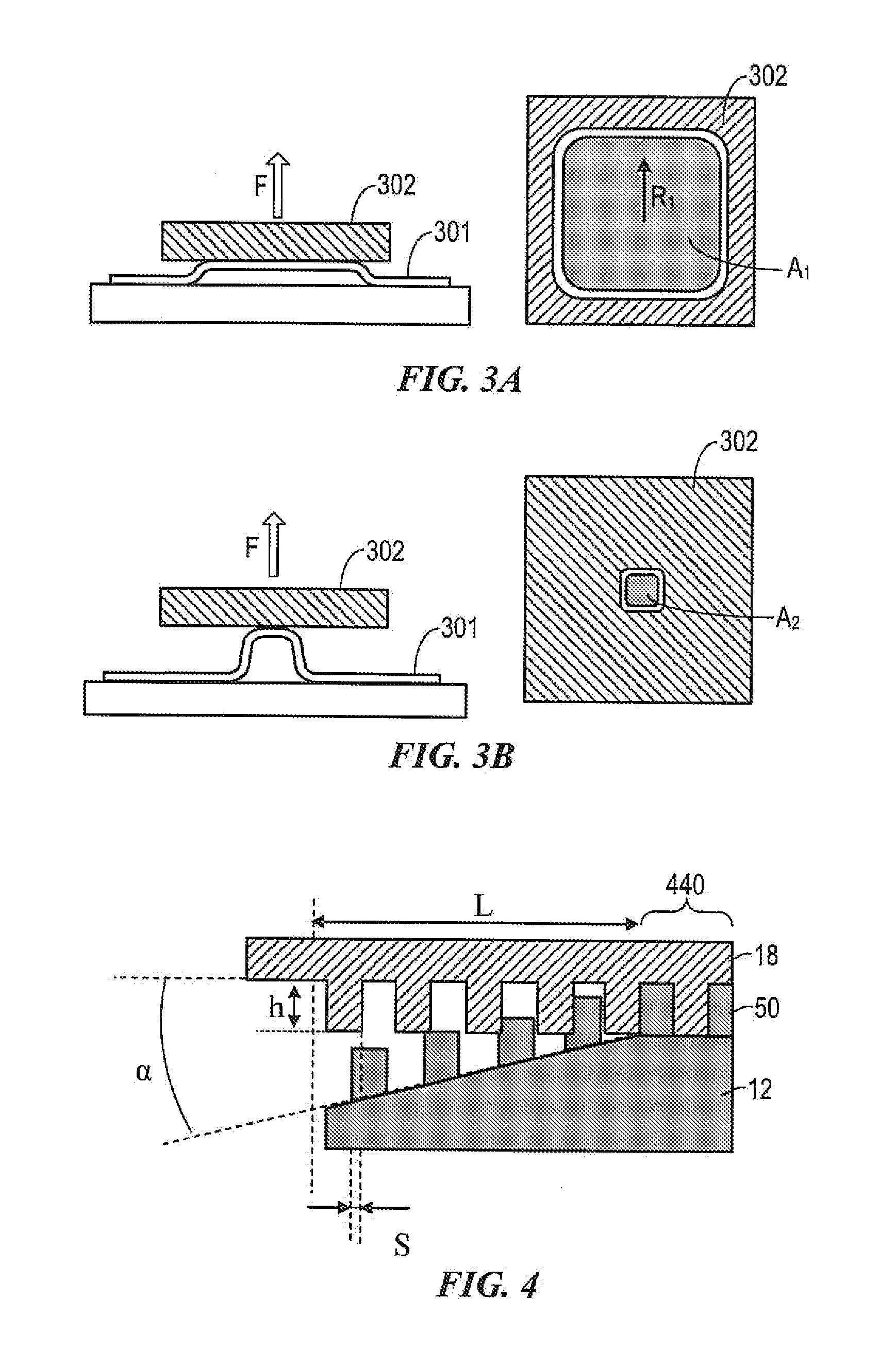Strain and Kinetics Control During Separation Phase of Imprint Process
- Summary
- Abstract
- Description
- Claims
- Application Information
AI Technical Summary
Problems solved by technology
Method used
Image
Examples
Embodiment Construction
[0020]Referring to the figures, and particularly to FIG. 1, illustrated therein is a lithographic system 10 used to form a relief pattern on substrate 12. Substrate 12 may be coupled to substrate chuck 14. As illustrated, substrate chuck 14 is a vacuum chuck. Substrate chuck 14, however, may be any chuck including, but not limited to, vacuum, pin-type, groove-type, electromagnetic, and / or the like. Exemplary chucks are described in U.S. Pat. No. 6,873,087, which is hereby incorporated by reference.
[0021]Substrate 12 and substrate chuck 14 may be further supported by stage 16. Stage 16 may provide motion along the x-, y-, and z-axes. Stage 16, substrate 12, and substrate chuck 14 may also be positioned on a base (not shown).
[0022]Spaced-apart from substrate 12 is a template 18. Template 18 generally includes a mesa 20 extending therefrom towards substrate 12, mesa 20 having a patterning surface 22 thereon. Further, mesa 20 may be referred to as mold 20. Template 18 and / or mold 20 may...
PUM
| Property | Measurement | Unit |
|---|---|---|
| Thickness | aaaaa | aaaaa |
| Force | aaaaa | aaaaa |
| Pressure | aaaaa | aaaaa |
Abstract
Description
Claims
Application Information
 Login to View More
Login to View More - R&D
- Intellectual Property
- Life Sciences
- Materials
- Tech Scout
- Unparalleled Data Quality
- Higher Quality Content
- 60% Fewer Hallucinations
Browse by: Latest US Patents, China's latest patents, Technical Efficacy Thesaurus, Application Domain, Technology Topic, Popular Technical Reports.
© 2025 PatSnap. All rights reserved.Legal|Privacy policy|Modern Slavery Act Transparency Statement|Sitemap|About US| Contact US: help@patsnap.com



